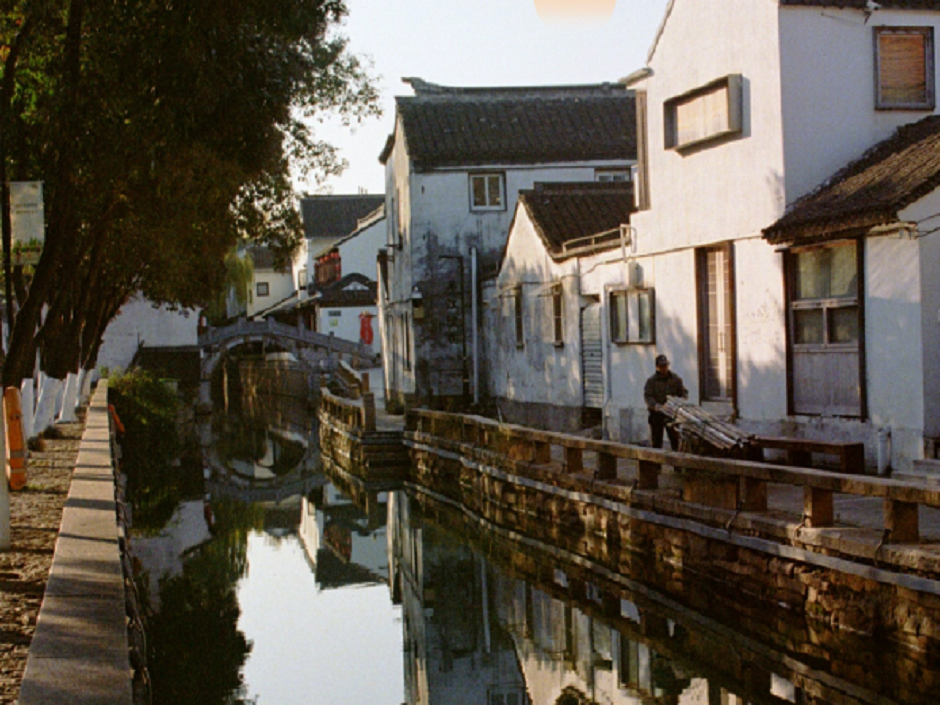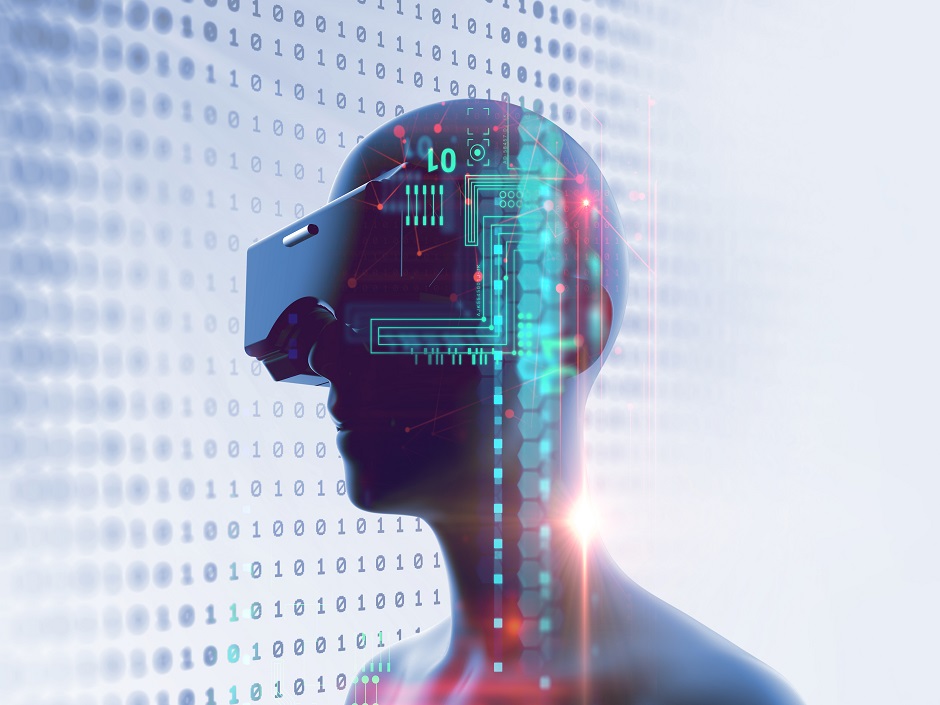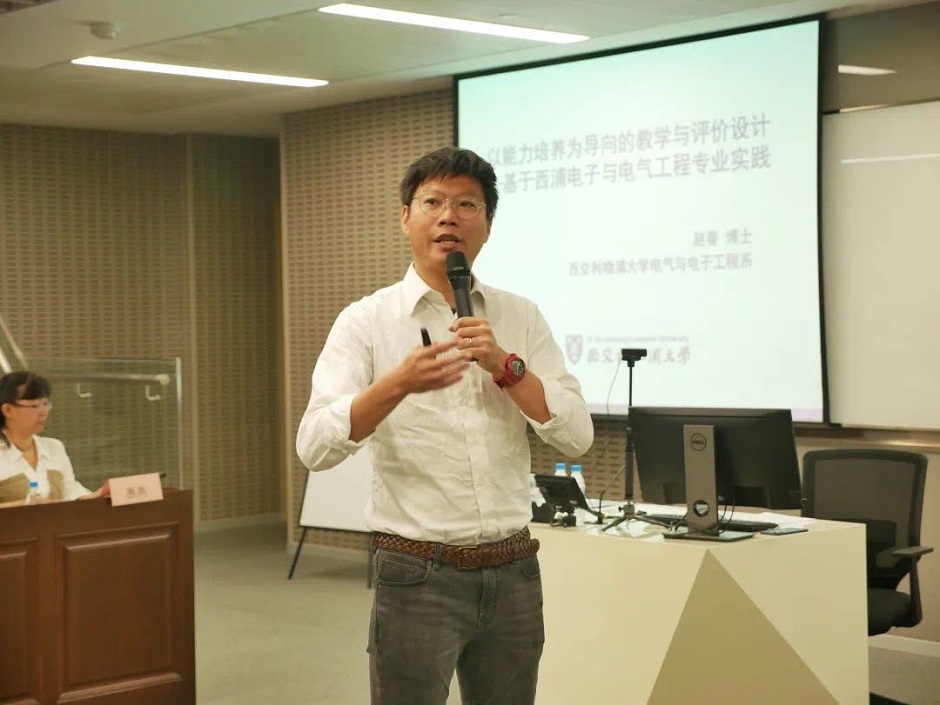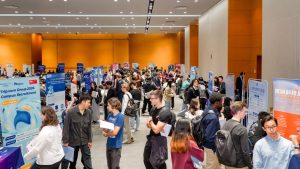24 Nov 2021

In part two of our sustainability series, Dr Jieming Ma of the Department of Computing talks to us about his research into intelligent robots and alternative energy.
1. How would you describe your research?
Most of our research focuses on ways to protect the environment by using technology, such as artificial intelligence (AI) and renewable energy. Our current research is called Blue Squared (Blue²), because our goal is for the sky to be clean and clear, and for water to be blue instead of green.
2. What’s your specific area of expertise?
I focus on solar energy. But my research team and I are not just working on solar cell design; we’re also developing more efficient methods of controlling solar energy systems. For example, we develop algorithms and strategies to adjust the ways solar cells operate under different environmental conditions. We are also developing some algorithms to check the sun.

3. What’s the biggest challenge with solar power?
The sun! Because it’s always moving. And also varying temperatures, moving clouds that block the sunshine… any environmental changes that can affect the efficiency of the solar system while it is running by itself.
4. What are you currently working on?
My team and I are developing an intelligent river cleaning robot. We have many rivers and lakes in Suzhou, but increased human activity has negatively affected the water quality and ecosystem. There’s a lot of organic waste, in the form of blue-green algae, and inorganic waste, like plastic.
We’re designing a robot boat system that can run without human intervention, in order to clean the rivers. The system consists of a battery-powered ship with a cabin to store the waste, and some cameras, radars, and GPS to make sure it has a safe journey.

5. What are some challenges you’ve had with the robot boat system?
The biggest problem is battery life. Currently, the boat can only work for four hours at a time, which is one of the reasons it wouldn’t be so widely used.
We’re working on a solar power system especially for the boat. We’re using a very specialised solar cell that has a very small physical footprint, but can collect a lot of energy. The problem with this is that it needs to be positioned very specifically in order to concentrate the sunlight.
6. Tell me more about this solar cell.
The cell is very small but expensive. It’s 500 RMB for one piece, which is why it’s not widely used yet. But it can generate the same amount of energy as a very large panel – about 300 Watts – in half the space.

7. What are your plans for the river-cleaning research in future?
Cleaning up the rivers and lakes is important, but we also want to learn more about the waste itself. In the future of this research, we may classify the floating waste. We are also thinking of adding an arm that could help pick up the waste.
Another important thing is pollution source detection. If the boats are equipped with cameras, we can get proof of where the waste comes from. Maybe a factory is discharging its waste into the water, and we can take pictures of it. We can also measure the water quality, and keep track of it.
8. What research do you hope to work on in the future?
Eventually, our big target is to develop a map that tracks plastic waste in rivers. It could be a China map, or even worldwide. When people look at this map, they can see where the plastic is and how much there is, and they can predict things like bacterial blooms. We can even do waste predictions eventually, and this will help government policymakers.

9. What do you love most about your research?
For me, it’s about the algorithms. I love the programming. It’s part of everything – you can use maths in a traditional, theoretical way, of you can use it to create things that help people and improve the planet.
10. What is the future of sustainable energy?
Currently, we’re focusing on the hybrid approach. The normal way is to use wind and solar together to generate electricity. This is not a new method. What we’re thinking is to use them together, but in different way. For example, to use wind to push the boat, and solar energy to power the control system.
By Huatian Jin
Edited by Patricia Pieterse
Photos courtesy of Dr Jieming Ma
24 Nov 2021
RELATED NEWS

Compression rate can predict cybersickness
Do you suffer from cybersickness? It affects many virtual reality (VR) users and remains a significant challenge. Cybersickness, like other forms of motion s...
Learn more

Dr Chun Zhao: Tiny circuits, big impact,
Integrated circuits (IC) have become the beating heart of today’s digital world. This technology’s advent has paved the way for devices such as mobile phones...
Learn more







